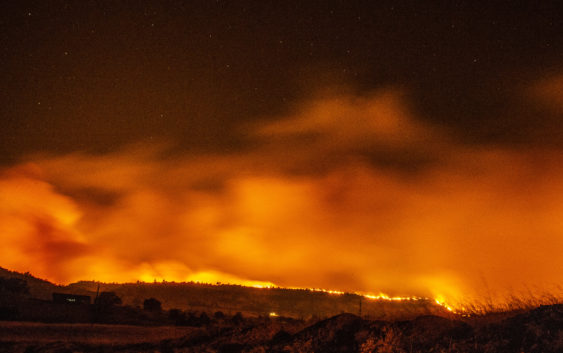- NWS: 5 tornadoes touched down in Houston area on day after Christmas
- Weather Aware: Heavy rain, gusty winds and isolated tornadoes across the Carolinas Sunday
- Postal worker unharmed as tornado briefly touches down, flipping truck in Houston
- Damage to homes, flipped USPS mail truck in SW Houston caused by tornado, National Weather Service says
- Nonprofit delivers homes to families affected by Hurricane Helene
What does it really mean when a wildfire has been ‘contained’ or ‘controlled’?

If a wildfire has been 100 percent contained, does that mean it’s out? What about controlled? And what do those containment percentages in daily fire updates mean, anyway?
The terms, used in California Department of Forestry and Fire Protection incident reports on wildfires — including the devastating Camp and Woolsey fires — are actually technical firefighting terms with very specific meanings, reports the National Wildfire Coordinating Group.
Here’s a basic glossary:
Containment, normally expressed as a percentage, indicates how much of the fire has been enclosed by a control line. A wildfire with 25 percent containment means control lines have been completed around 25 percent of the fire’s perimeter.
Control lines are constructed or natural barriers used to stop a wildfire from spreading, also called firebreaks or fuel breaks. Firefighters sometimes create them with controlled burns to remove fuel before the wildfire reaches it.
Contained fires have been fully enclosed by control lines, which also are complete around any related spot fires. The fire may still be burning but is not likely to spread.
Controlled fires are not only contained, but have been burned out along the interior of the control line with any hot spots threatening the line cooled down. The control lines are expected to halt the spread of the fire under reasonable conditions.